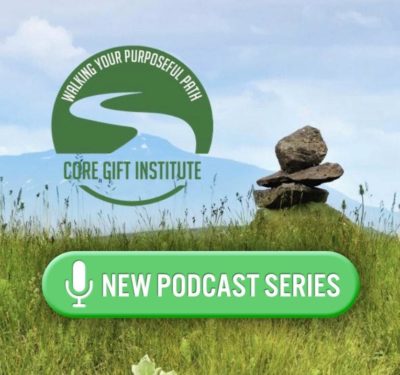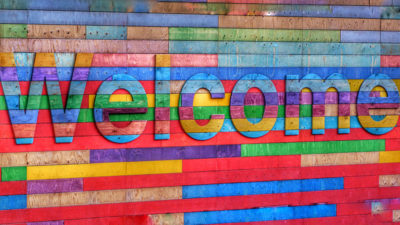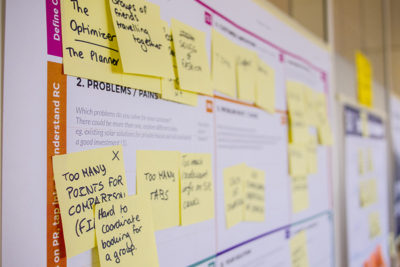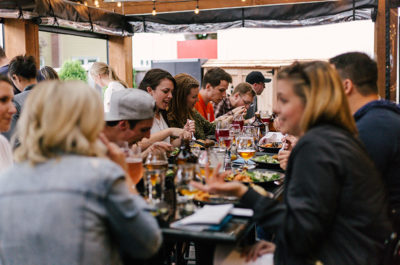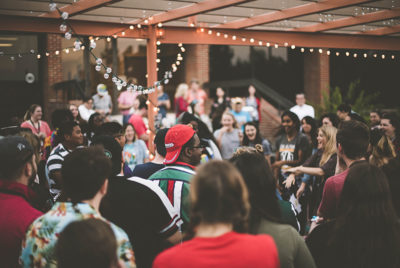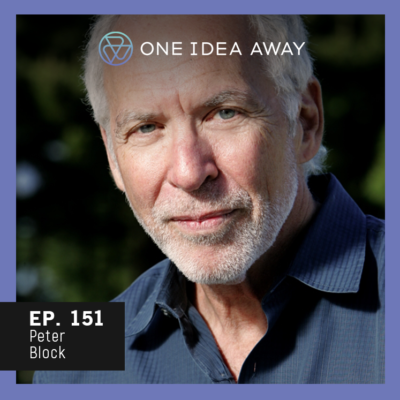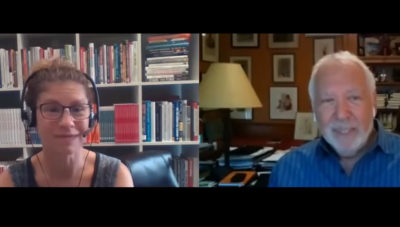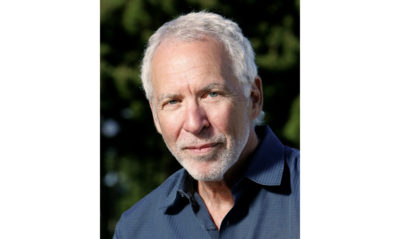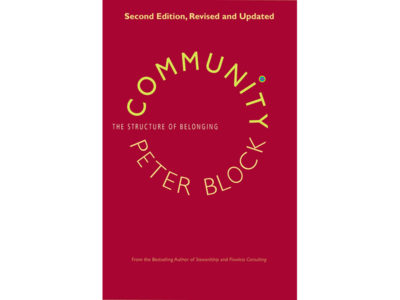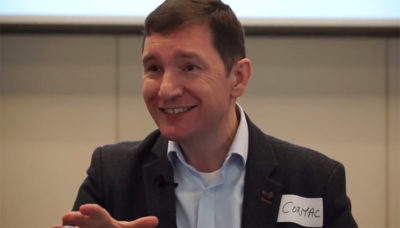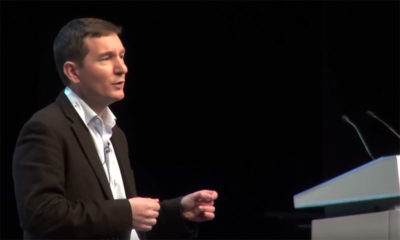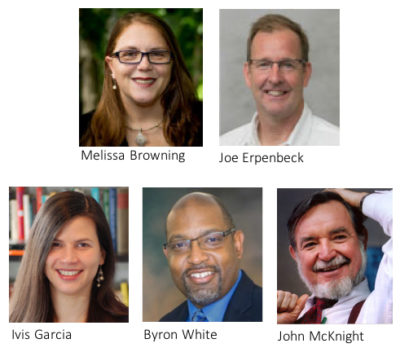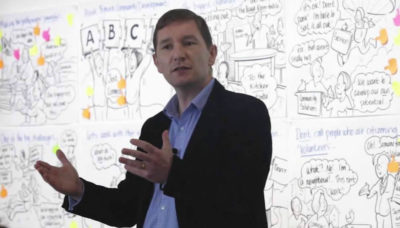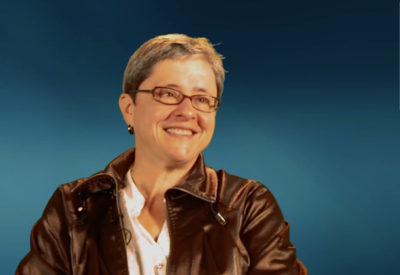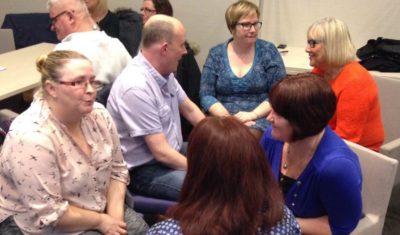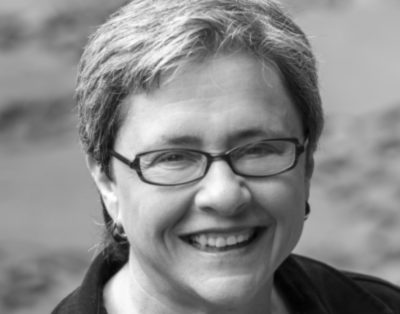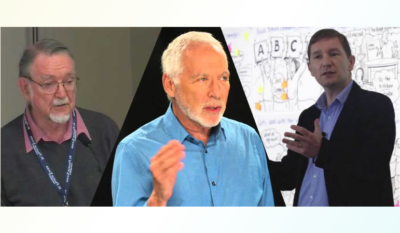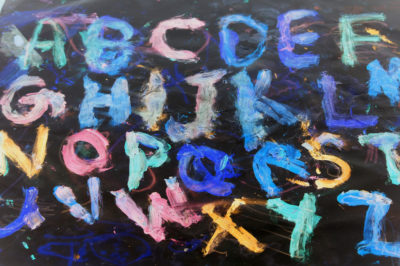Tag Archives: Community Building
Power of Gifts Podcast
Embracing Deviance
The Affinity Dilemma
The Dilemma of Meetings
The Problem With Problems
Organizing Residents to Solve an Impossible Challenge
Faith and Church with No Bricks and Mortar: Conversation with Father Joseph Kovitch
Since their book The Abundant Community came out, John McKnight and Peter Block have sought out those social innovators who are bringing alive the ideas about how neighbors and local institutions can come together to create care, kindness, and welcome. One of those innovators is Father Joseph Kovitch. Peter and John talked with him in June of 2018. They are still in touch with him and what he describes here is still vibrant today.
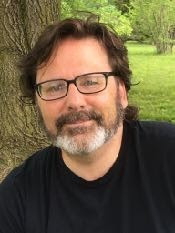
Father Joe was a priest of Saint Matthew’s Episcopal Community in Westerville, Ohio, who worshiped in an Irish pub and is currently on a university campus; they are also serving out of a community house nearby. He has been ordained for 30 years and has served in many ministries and missional environments, some of which include serving as leader of a large traditional congregation, leading a redevelopment merger of three congregations into a new mission, and, at this moment, serving as Diocesan Missioner for New Episcopal Communities in the Episcopal Diocese of Southern Ohio. Here is the conversation we had in 2018.
Listen to the Full Conversation:
The Parish in the Neighborhood
When we look at the Parish as a microcosm of all life’s dimensions, the conversation changes from traditional clergy talk of “butts, budgets and buildings,” to: What is God up to in our places, and how do we join in with that? Listen to Paul Sparks, Co-founding Director of the Parish Collective, discuss with Peter Block and John McKnight in this conversation:
Rethinking Racism
In January 1865, a revolutionary Special Order 15 known commonly as reconstruction or “40 acres and a mule” was a promise given to former slaves to receive 400,000 acres of free tillable land along the southern east U.S. coastline that would be governed by the black people themselves.
But the policy was overturned that fall by President Andrew Johnson, Lincoln’s successor. The idea behind Special Order 15 shows America understood reparations. During a “Rethinking Racism” gathering in Cincinnati Rev. Damon Lynch III shares his goal to build strong, healthy, black communities and the four things that are needed to make that happen.
Read the handout: The Truth Behind ’40 Acres and a Mule’
Listen here
Economics of Compassion Initiative on the Ground in Spring Grove Village
The Moment for Community Has Arrived
Creating Community: Podcast
Discuss Community with Peter Block
Building Community in an Era of Isolation
Strong Neighborhoods
Returning Death to Community
Associating Associations: The Power of Convening
An Introduction to ABCD
How Neighborhoods Engage with Local Governments
How are institutions and government most useful in supporting neighbor driven initiatives? What can we do with a little bit of outside assistance? And what do we need somebody from the outside to do? Ron Dwyer-Voss asks these three questions in his work engaging with community groups who want to have stronger relationships with local government.
Ron, owner and founder of Pacific Community Solutions, uses the Asset-Based Community Development process with community groups to help them identify how they can do something to create transformation. He shares with John McKnight and Peter Block stories and insights such as the importance of including reflection and learning conversations as part of the process.
Listen:
ABCD Workshop Coming to Cincinnati
Exploring transformational neighborhood change: Rich Jones
PeoplesHub: Connecting change-makers online
How can we connect local change-making pioneers and reduce their sense of isolation? A new, online platform called PeoplesHub will bring interactive, participative processes to local neighborhood groups and connect them to trainers and other groups across the country.
Sarah van Gelder, co-founder of YES! Magazine, says PeoplesHub training will range from general topics – such as how to host an ecstatic meeting and how to navigate conflict – to providing tools for specific areas of change people are working on.
Instead of bottom-up or top-down, the platform promotes lateral connections amongst people who are engaged in social innovations. In this call with Peter Block and John McKnight, Sarah discusses the initial phases of the new online platform and its methodology.
Listen here:
Quotes:
“(The) power that people have in their own communities to get stuff done … if we can unleash that power, we can have a real transformation of this country.” – Sarah van Gelder
Related Link:
revolutionwhereyoulive.org
Cormac Russell: Health Beyond Healthcare
The Good Life Conversation
Building community: Tune into talk with Sarah van Gelder
Exploring How Community Animators Work: Cormac Russell
Tune into this insightful conversation with Cormac Russell. Cormac, Managing Director of UK-based Nurture Development, has been doing asset based community work in over 100 neighborhoods around the world.
In this conversation, Cormac shares the 8 Touchstones he developed for animating neighborhood relationships. He also shares about learning sites, the role of the community animator and connector, and lessons being learned.
Listen here:
Quotes:
“A lot of our work is about just calling people into a radical presence and a radical act of revealing what’s here, and how we can get that connected up and mobilized.” – Cormac Russell
“We are very focused on how we can accompany local residents and interested practitioners on the journey of getting into right relationship with each other. That’s a critical first touchstone.” – Cormac
Russell
Photo via Nurture Development



